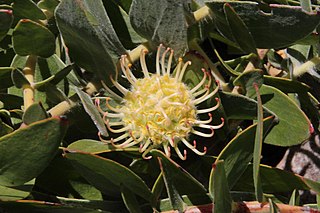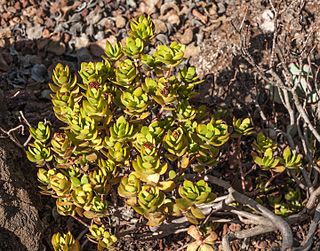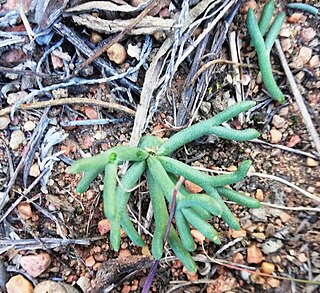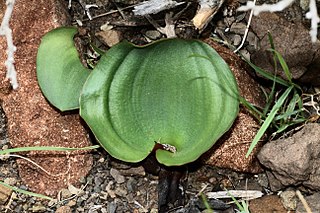
Capsicum pubescens is native to Bolivia, Peru and Ecuador and dates back to pre-Incan times; traces of its presence have been found in the Guitarrero Caves. The existence of Capsicum pubescens was documented by ancient Peruvians of the Paracas, Nazca, Moche, and Chimu cultures, through textiles, ceramics, and domestic remains. This chili pepper is the most important ingredient of the Bolivian sauce llajwa. It is also considered the flagship of Peru and it is consumed fresh, paste, dried, or ground. It belongs to a species of the genus Capsicum (pepper), and is known in Peru and Ecuador as rocoto, locoto in Bolivia and Argentina and as the manzano pepper in Mexico which means 'apple' for its apple-shaped fruit. This species is found primarily in Central and South America, and is known only in cultivation. The species name, pubescens, means hairy, which refers to the hairy leaves of this pepper. The hairiness of the leaves, along with the black seeds, distinguish this species from others. As they reach a relatively advanced age and the roots lignify quickly, sometimes they are called tree chili. Of all the domesticated species of peppers, this is the least widespread and systematically furthest away from all others. It is reproductively isolated from other species of the genus Capsicum. A very notable feature of this species is its ability to withstand cooler temperatures than other cultivated pepper plants, although it cannot withstand frost.

Haworthia is a large genus of small succulent plants endemic to Southern Africa (Mozambique, Namibia, Lesotho, Eswatini and South Africa).

Eriospermum is a genus of tuberous flowering plants. It contains about 80-100 species, native to sub-Saharan Africa.

Mimetes hirtus is an upright, evergreen shrub of 1½–2 m high from the family Proteaceae. It has upright, overlapping, (broadly) lance-shaped leaves, without teeth, but with one thickened pointy tip. It has cylindric inflorescences topped by a pine apple-like tuft of pinkish-brownish, smaller and more or less horizontal leaves. The flowerheads are tightly enclosed by yellow, red-tipped bracts, only the 9–14 long red styles and the whitish silky tips of the perianth sticking out. It is primarily pollinated by the Cape sugarbird. It is an endemic species of the southwest of the Western Cape province of South Africa, and grows in wet zones at the base of south facing mountain slopes. Flower heads may be found from May to November, but peaks in July and August. The species has several vernacular names of which marsh pagoda seems to be used most.

Leucospermum cordifolium is an upright, evergreen shrub of up to 1½ m (5 ft) high from the Proteaceae. The flower heads are globe-shape with a flattened top, 10–12 cm (3.9–4.7 in) in diameter, and are carried individually or with two or three together mostly at a right angle to its branch. The perianth is 3–3½ cm long, yellow, orange or crimson in color. From each flower emerges a 4½–6 cm (1.8–2.4 in) long style sticking out horizontally but curving upwards near the obliquely, shell-shaped, thicker pollen presenter. This gives each head the appearance of a pincushion. Its common name is ornamental pincushion in English and bobbejaanklou in Afrikaans. It flowers between the middle of July and the end of November. It naturally occurs near the south coast of the Western Cape province of South Africa. Varieties and hybrids of this species are used as cut flower and garden plant.
Acanthopale pubescens is a species of the genus Acanthopale of the family Acanthaceae. The species occurs in East and Southern Africa. Acanthopale pubescensis also known as Herayye in Ethiopia.

Leucospermum cordatum is an evergreen, creeping shrublet of about 20 cm (8 in) high from the family Proteaceae. It has pale cream flower heads, from which pink flushed styles emerge, the whole reminiscent of a pincushion. Its common name is heart-leaf pincushion in English. It flowers between July and December but the peak of the flowering period is from September to November. It is an endemic species, that is only known from two locations close to each other in the Western Cape province of South Africa.

Mimetes saxatilis or limestone pagoda is an evergreen, upright, rarely branching shrub of 1–2¼ m high, assigned to the family Proteaceae. The approximately oval leaves are 3½–5 cm (1.4–2.0 in) long and 1½–3 cm (0.6–1.2 in) wide with a blunt, thickened, reddish tip or with three crowded teeth. It has cylinder-shaped inflorescences topped by a crest of green leaves, further consisting of heads with 12-22 individual bright yellow flowers, each in the axil of a flat, green leaf. It is an endemic species that is restricted to limestone outcrops in the Agulhas plains in the very south of the Western Cape province of South Africa. It is considered an endangered species. Flowering may occur between July and December, but is unreliable in its timing, dependent on sufficient moisture availability.

Crassula cultrata is a succulent plant native to the southern parts of South Africa.

Eriospermum bowieanum is a species of geophytic plant of the genus Eriospermum, endemic to the Robertson Karoo region of the Western Cape Province, South Africa.
Eriospermum cooperi is a species of flowering plant of the Asparagaceae family. It is a summer rainfall species found in rocky grassland and open scrub from the Eastern Cape, South Africa to Zimbabwe. It has a solitary erect leaf, white to pale green flowers and grows to 60 cm. The outer tepals are sometimes reddish brown.
Eriospermum breviscapum is a species of geophytic plant of the genus Eriospermum, indigenous to South Africa.
Eriospermum dregei is a species of geophytic plant of the genus Eriospermum.

Eriospermum capense is a species of geophytic plant of the genus Eriospermum, indigenous to the Western Cape Province, South Africa.
Eriospermum bayeri is a species of geophytic plant of the genus Eriospermum, indigenous to the Western Cape Province, South Africa.
Eriospermum proliferum is a species of flowering plant in the Asparagaceae family.
Eriospermum graminifolium is a species of geophytic plant of the genus Eriospermum, indigenous to South Africa.
Eriospermum zeyheri is a species of geophytic plant of the genus Eriospermum, indigenous to South Africa.
Eriospermum lanceifolium is a species of geophytic plant of the genus Eriospermum.
Eriospermum exile is a species of geophytic plant of the genus Eriospermum, indigenous to South Africa.









